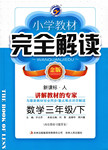题目内容
【题目】 If humans ever settle on Mars, they will need water. There is just one problem---there seems to be only huge sheets of ice. Luckily, we know how to drill(钻孔) ice for water. Such methods are already used in Antarctica, and researchers now think they could get them to work on the Red Planet, too. The atmosphere of Mars is too dry to make extracting water vapour from it possible. So ice seems the best bet. But the obvious ice sheets are in the unlivable polar ice caps and would be difficult to reach for drilling.
However, in 2018, at the edge of the cliffs, NASA's Mars Reconnaissance Orbiter spotted relatively accessible water ice that is probably at least 130metres thick and covered in just a few metres of rock and dust. These may be the best place to get the water needed for future exploration of the planet.
The drilling techniques needed have already been developed for cold areas on Earth where we need to melt buried ice for water. In the early 1960s the US Army used a type of subsurface reservoir(水库)called Rod Well, in army camps in Greenland. The method works by drilling through the ground into the ice, melting the ice to create a pool, and then pumping water up. By supplying heat continuously, they create a reservoir and a steady water supply. It has been used in remote areas such as the Amundsen-Scott South Pole Station Stephen Hoffman at the Aerospace Corporation in Texas and his colleagues simulated(模拟)how a Rod Well would do on Mars. They found that with the power of 9 kilowatts (千瓦)to melt ice, it could in theory produce about 380 litres of water each day and maintain a reservoir of constant size at the bottom of a borehole(钻孔). That is close to the average daily water use each person in the US, but about 10 times what each astronaut on the International Space Station uses daily.
【1】Which of the following can replace the underlined word "extracting" in the first paragraph ?
A.obtainingB.protecting
C.PreventingD.choosing
【2】Why does the author mention the Rod Well in Paragraph 3?
A.To explain how water ice is drilled on Mars.
B.To tell about the history of water ice drilling techniques.
C.To prove the importance of water ice drilling techniques
D.To show techniques for drilling water wells in Martian ice exist.
【3】On average, how much water does an astronaut on the International Space Station use daily?
A.10 litresB.38 litres
C.160 litresD.380 litres
【4】What would be the best title for the text?
A.Preparing to settle on the Red Planet one day.
B.Finding water on the Red Planet for survival.
C.Using some ways to create a livable environment on Mars.
D.Drilling water wells in Martian ice to survive on Mars.
【答案】
【1】A
【2】D
【3】B
【4】D
【解析】
这是一篇说明文。文章告诉我们如果人类要在火星上生存可以通过人类现有的技术在火星巨大的冰层上钻冰取水。
【1】
词义猜测题。根据第一段The atmosphere of Mars is too dry to make extracting water vapour from it possible(火星的大气层太干燥,无法从其中_____水蒸气)可知,依据划线前提到了火星的大气层太干燥可推出从大气层“获取”水蒸气是不可能的。A. obtaining 获取;B. protecting 保护;C. preventing 阻止;D. choosing 选择。故选A项。
【2】
推理判断题。根据第三段The drilling techniques needed have already been developed for cold areas on Earth where we need to melt buried ice for water. In the early 1960s the US Army used a type of subsurface reservoir called Rod Well, in army camps in Greenland(在地球上寒冷的地区,我们需要融化地下的冰以获得水,而所需的钻探技术已经开发出来。在20世纪60年代早期,美国军队在格陵兰的军营中使用了一种叫做Rod Well的地下水库)可知融化地下冰已获得水的技术已经开发出来了。文章第一段中提及人类是无法从火星的大气层中获得水的,只能从巨大的冰层中钻冰取水。第三段告知我们钻冰取水的技术已经有了,将来可用于火星开发中。故选D项。
【3】
细节理解题。根据文章最后一段They found that with the power of 9 kilowatts (千瓦)to melt ice, it could in theory produce about 380 liters of water each day and maintain a reservoir of constant size at the bottom of a borehole(钻孔). That is close to the average daily water use each person in the US, but about 10 times what each astronaut on the International Space Station uses daily.他们发现,用9千瓦的能量融化冰,理论上每天可以产生380升的水,并在一个钻孔底部维持一个恒定大小的蓄水池。这接近于美国人均日用水量,但大约是国际空间站每位宇航员日用水量的10倍)可知,美国人均日用水量是380升的水,这个用水量是每位宇航员日用水量的10倍。因此可以算出宇航员日用水量38升左右。故选B 项。
【4】
主旨大意题。根据文章第一段If humans ever settle on Mars, they will need water. There is just one problem---there seems to be only huge sheets of ice. Luckily, we know how to drill ice for water. Such methods are already used in Antarctica, and researchers now think they could get them to work on the Red Planet, too.(如果人类在火星定居,他们将需要水。只有一个问题——这里似乎只有巨大的冰层。幸运的是,我们知道如何钻冰取水。这种方法已经在南极洲使用,研究人员现在认为他们也可以在这颗红色星球上使用)可知,如果人类要在火星上生存可以通过人类现有的技术在火星巨大的冰层上钻冰取水。在文章第二段提到,在火星上找到了可被人类利用的冰。文章第三段提到了现有的“钻冰取水”的技术。综合分析,故选D项。

 课堂全解字词句段篇章系列答案
课堂全解字词句段篇章系列答案 步步高口算题卡系列答案
步步高口算题卡系列答案 点睛新教材全能解读系列答案
点睛新教材全能解读系列答案 小学教材完全解读系列答案
小学教材完全解读系列答案